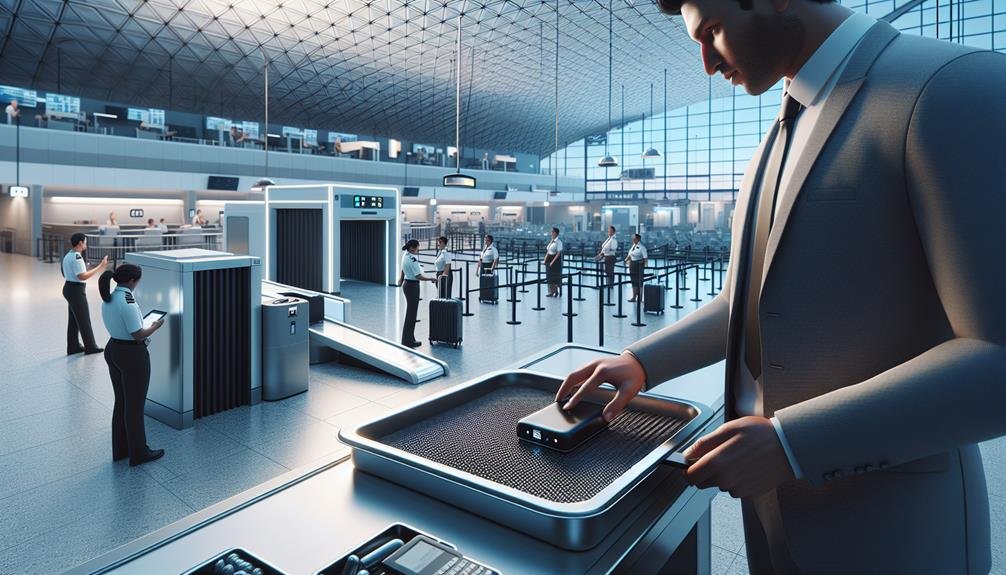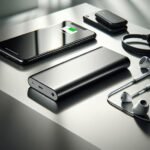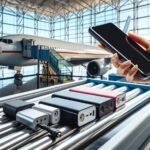Yes, you can bring power banks on flights, but adhere to specific regulations. Airlines enforce battery safety standards due to lithium-ion risks. Your power bank must be in carry-on luggage, not checked baggage. Most airlines permit power banks up to 100 Wh without approval, while those between 100 Wh and 160 Wh require airline consent. Make sure your device is from a reputable manufacturer and clearly labeled with its capacity. Exceeding voltage or capacity limits poses safety hazards like overheating. Follow all guidelines to guarantee a safe journey, and there are more details on how to prepare.
Airline Regulations
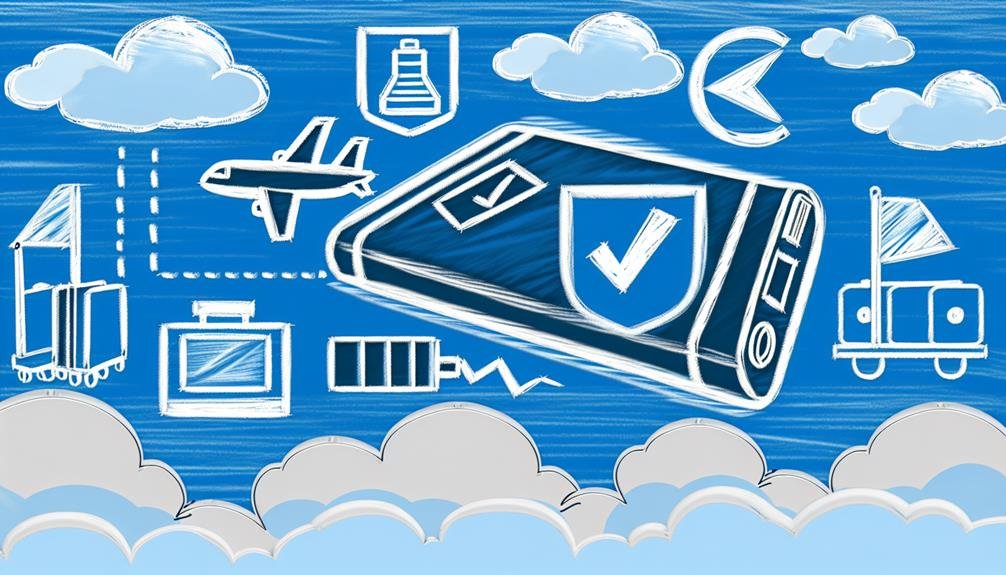
When it comes to airline regulations, understanding that power banks must comply with specific safety standards to be allowed on board is vital. Airlines have strict battery regulations to guarantee passenger safety, and these policies cover various aspects such as capacity limits, labeling requirements, and the type of battery used.
Firstly, most airlines follow the International Air Transport Association (IATA) guidelines. According to these guidelines, power banks with a capacity of up to 100 watt-hours (Wh) are generally allowed in carry-on baggage without prior approval. For those between 100 Wh and 160 Wh, you must obtain airline approval before flying. Anything above 160 Wh is typically prohibited.
Secondly, it's important for your power bank to have clear labeling indicating its capacity. Airlines often require this information to be easily verifiable at security checkpoints. If your power bank lacks proper labeling, it may be confiscated.
Lastly, lithium-ion batteries, commonly used in power banks, are subject to strict scrutiny due to their potential risks. Airline policies mandate that power banks must be carried in your hand luggage and not in checked baggage to reduce fire hazards.
Safety Concerns
Given these regulations, safety concerns primarily focus on the potential hazards posed by lithium-ion batteries in power banks during air travel. Lithium-ion batteries, which power most electronic devices, are known for their high energy density and efficiency. However, they also pose specific risks, such as thermal runaway, which can lead to overheating, fire, or even explosions if not handled properly.
You should be aware that battery safety is a top priority for airlines and regulatory bodies. Incidents involving lithium-ion batteries, though relatively rare, can have serious consequences in the confined space of an aircraft. Properly managing and storing these power banks is essential to guarantee the safety of all passengers and crew members.
To mitigate risks, follow guidelines on how to handle and store your power bank. Avoid exposing it to extreme temperatures, physical damage, or moisture. Make sure your power bank is from a reputable manufacturer and complies with international safety standards. Also, inspect your power bank for any signs of damage before traveling.
Carry-On Vs. Checked Luggage
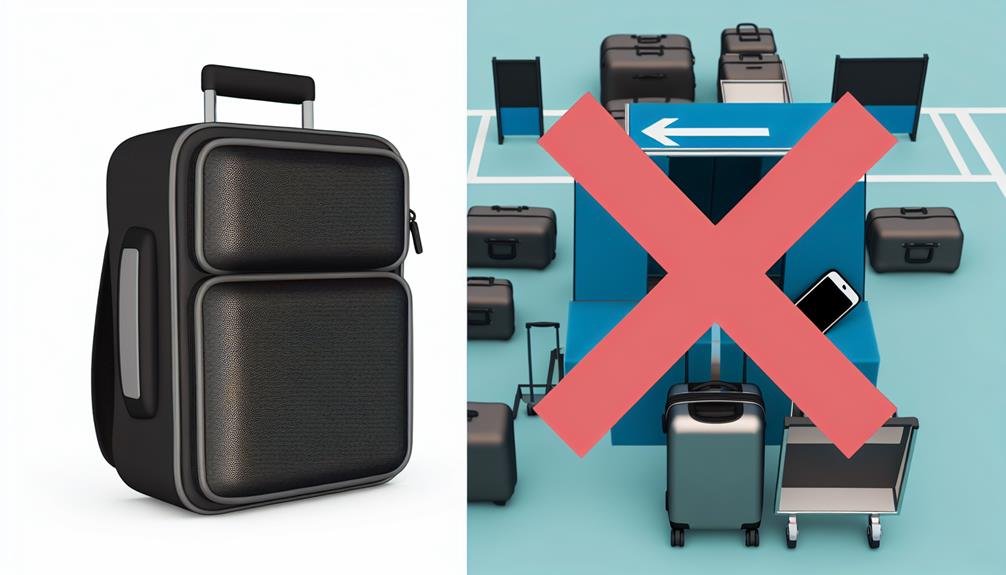
For safety and regulatory reasons, power banks must be carried in your carry-on baggage rather than checked luggage. The primary concern is the potential fire hazard posed by lithium-ion batteries, which are widespread in most power banks. In-flight safety regulations mandate that these batteries need to be accessible to the flight crew in case of an emergency, which isn't achievable if they're stored in checked baggage.
When planning your storage options, keep in mind that power banks generally have specific weight restrictions. Make sure your carry-on baggage doesn't exceed the airline's weight limit, as power banks can add significant weight, depending on their capacity. Additionally, pay attention to the charging capabilities and battery life of your power bank, as these factors can influence your travel experience. A power bank with higher charging capabilities ensures your devices remain functional throughout the flight, while adequate battery life is essential for long-haul travel.
Always adhere to airline guidelines to guarantee a safe flight for everyone. By carrying your power bank in your carry-on baggage, you're not only following regulations but also contributing to the overall safety of the flight.
Power Bank Capacity Limits
Understanding power bank capacity limits is vital for ensuring compliance with airline safety regulations and maintaining in-flight safety. Airlines impose specific restrictions on the charging capacity and voltage limits of power banks to mitigate risks associated with lithium-ion batteries. These regulations are essential as exceeding the permitted limits can lead to overheating or even fire hazards during the flight.
Most airlines allow power banks with a capacity up to 100 watt-hours (Wh) without prior approval. For those between 100 Wh and 160 Wh, you'll need airline consent. Anything above 160 Wh is generally prohibited on flights. Voltage limits also play a role; typically, power banks should not exceed 5V for safety reasons.
Here's a quick reference table summarizing the capacity limits:
| Capacity (Wh) | Airline Approval Required | Permitted on Flight |
|---|---|---|
| Up to 100 Wh | No | Yes |
| 100–160 Wh | Yes | Yes |
| Above 160 Wh | N/A | No |
Ensuring your power bank's charging capacity and voltage limits comply with these guidelines is crucial. Always check with your airline to confirm their specific regulations. By adhering to these limits, you're contributing to a safer travel environment for everyone on board.
Tips for Travelers
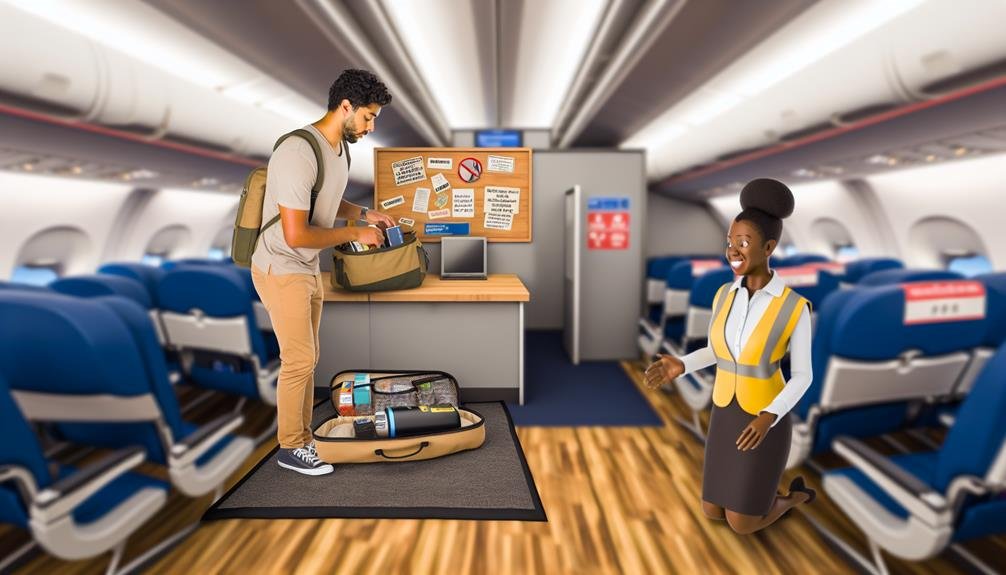
To guarantee a hassle-free journey, make certain your power bank complies with airline regulations and is easily accessible for inspection at security checkpoints. It's crucial to verify that your portable charger adheres to the airline's watt-hour (Wh) limits, typically capped at 100Wh without prior approval. Always carry your power bank in your carry-on luggage, as most airlines prohibit them in checked baggage due to safety concerns.
When considering packing essentials, prioritize travel gadgets that are airline-compliant. Opt for power banks with clear labeling of their capacity. This ensures swift verification and minimizes any delays during security checks. Additionally, ascertain your device features built-in safety mechanisms like overcharge protection and short-circuit prevention to further mitigate any potential risks.
Maximize battery life efficiency by only carrying portable chargers that you genuinely need. Overpacking multiple high-capacity devices can attract unwanted scrutiny and potential confiscation. It's advisable to distribute the battery load across smaller, compliant units if extended power requirements are anticipated.
Frequently Asked Questions
Can I Use My Power Bank to Charge Devices During the Flight?
Yes, you can charge devices during the flight, but make sure your power bank's battery capacity complies with airline regulations. Always follow charging etiquette, like avoiding blocking aisles and making sure it doesn't exceed capacity limits for safety.
Are There Specific Brands of Power Banks That Are Recommended for Air Travel?
Imagine you're breezing through airport security with ease. The best power bank brands for air travel align with airline regulations, like Anker and RAVPower. Always check specific airline rules to guarantee your safety and compliance.
What Should I Do if My Power Bank Overheats on the Plane?
If your power bank overheats on the plane, prioritize power bank safety by immediately alerting flight attendants. Adhering to overheating precautions and emergency response protocols guarantees the power bank malfunction is addressed promptly and securely.
Are Solar-Powered Power Banks Subject to the Same Regulations?
Yes, solar-powered power banks are subject to the same regulations as regular ones. Guarantee compliance with airline charging restrictions and safety guidelines, as improper use can cause overheating or other safety issues during your flight.
How Should I Pack My Power Bank to Avoid Damage During Travel?
To guarantee safe power bank storage during travel, use a protective case. Follow travel precautions by verifying device compatibility with airline regulations. Adhere to charging restrictions: keep power banks in carry-on luggage to prevent damage.

